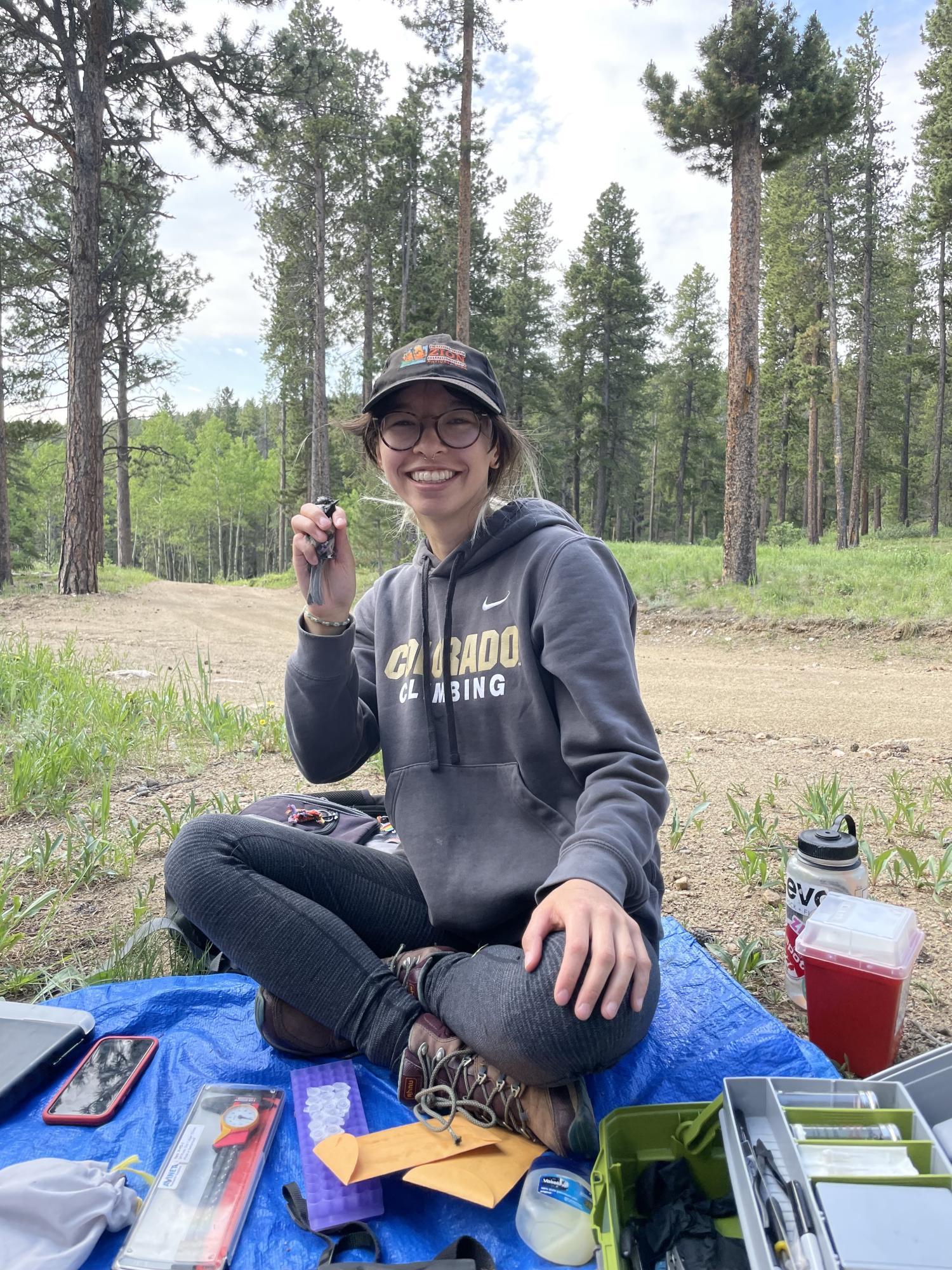Undergrad Highlight - Olivia Taylor
In perhaps a strange turn of events, I’ve found myself studying EBIO after initially embarking on my undergraduate career as a Violin Performance major. While this transition may seem drastic, to me it was a natural decision that followed my love of music, and more importantly, my curiosity about its nature. I’ve always been fascinated with the origins of music—how did it arise, why is it present in every culture, and why are we so emotionally stirred by it? Does it have an evolutionary purpose? By studying the existence of music and how it functions in other animals, I think we can gain valuable and novel insights into these questions. And what better place to start than with the most ubiquitous form of biologically-embedded music: birdsong.
My research in the Taylor Lab focuses on two species of closely-related songbirds, the black-capped chickadee (Poecile atricapillus) and the mountain chickadee (Poecile gambeli). Here in Colorado, their populations geographically overlap. This can lead to interspecies interactions, even hybridization (i.e., the interbreeding of two species), between the two. I’m looking at how their songs differ between these populations that geographically overlap, and populations that are geographically isolated from one another. I’m hoping that my study will further illuminate which influences drive song evolution; particularly, how co-occurring species can affect each others’ songs.



